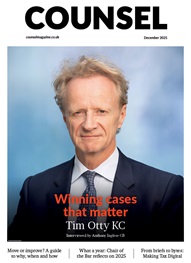*/
Students from ethnic minority backgrounds were around half as likely to obtain pupillage as white graduates, according to a report published by the Bar Standards Board (BSB).
While 73% of white students who obtained an ‘outstanding’ grade on the Bar Professional Training Course (BPTC) got a pupillage last year, only 59% of their ethnic minority counterparts did. For those who passed with a ‘very competent grade’, 39% of white students got pupillage compared to 22% of those from an ethnic minority background.
Looking at university results, 59% of white students who achieved a first class degree got pupillage, compared to 41.5% of ethnic minority students. The gap widened for those with a 2:1 – 39% of white students with an upper second class degree got a pupillage, compared with 18% of those from an ethnic minority background.
The report, Heads above the parapet: How can we improve race equality at the Bar? found that while 12% of barristers come from ethnic minority backgrounds – roughly the same as in the general population – the senior Bar is less diverse, with only 7% of ethnic minority QCs.
It also found that ethnic minority barristers are over-represented in certain areas of practice. They are more likely to be employed or to be sole practitioners and less likely to be in chambers.
Leslie Thomas QC, joint head of Garden Court Chambers, said that although things had changed since he was Called to the Bar in 1988, he still experienced discrimination and was often not perceived as being his client’s lawyer at court.
He said chambers should do more than ‘paying lip service’ to promoting diversity, and called for a kite mark to demonstrate best practice with chambers held to account for non-compliance.
Students from ethnic minority backgrounds were around half as likely to obtain pupillage as white graduates, according to a report published by the Bar Standards Board (BSB).
While 73% of white students who obtained an ‘outstanding’ grade on the Bar Professional Training Course (BPTC) got a pupillage last year, only 59% of their ethnic minority counterparts did. For those who passed with a ‘very competent grade’, 39% of white students got pupillage compared to 22% of those from an ethnic minority background.
Looking at university results, 59% of white students who achieved a first class degree got pupillage, compared to 41.5% of ethnic minority students. The gap widened for those with a 2:1 – 39% of white students with an upper second class degree got a pupillage, compared with 18% of those from an ethnic minority background.
The report, Heads above the parapet: How can we improve race equality at the Bar? found that while 12% of barristers come from ethnic minority backgrounds – roughly the same as in the general population – the senior Bar is less diverse, with only 7% of ethnic minority QCs.
It also found that ethnic minority barristers are over-represented in certain areas of practice. They are more likely to be employed or to be sole practitioners and less likely to be in chambers.
Leslie Thomas QC, joint head of Garden Court Chambers, said that although things had changed since he was Called to the Bar in 1988, he still experienced discrimination and was often not perceived as being his client’s lawyer at court.
He said chambers should do more than ‘paying lip service’ to promoting diversity, and called for a kite mark to demonstrate best practice with chambers held to account for non-compliance.


Chair of the Bar reflects on 2025
AlphaBiolabs has donated £500 to The Christie Charity through its Giving Back initiative, helping to support cancer care, treatment and research across Greater Manchester, Cheshire and further afield
Q&A with criminal barrister Nick Murphy, who moved to New Park Court Chambers on the North Eastern Circuit in search of a better work-life balance
Revolt Cycling in Holborn, London’s first sustainable fitness studio, invites barristers to join the revolution – turning pedal power into clean energy
Rachel Davenport, Co-founder and Director at AlphaBiolabs, reflects on how the company’s Giving Back ethos continues to make a difference to communities across the UK
By Marie Law, Director of Toxicology at AlphaBiolabs
Are you ready for the new way to do tax returns? David Southern KC explains the biggest change since HMRC launched self-assessment more than 30 years ago... and its impact on the Bar
Professor Dominic Regan and Seán Jones KC present their best buys for this holiday season
Marking one year since a Bar disciplinary tribunal dismissed all charges against her, Dr Charlotte Proudman discusses the experience, her formative years and next steps. Interview by Anthony Inglese CB
Little has changed since Burns v Burns . Cohabiting couples deserve better than to be left on the blasted heath with the existing witch’s brew for another four decades, argues Christopher Stirling
Pointillism, radical politics and social conscience. Review by Stephen Cragg KC